Medicinal Salves, Natural Dyes & Willow Baskets: Week 19 - 2014
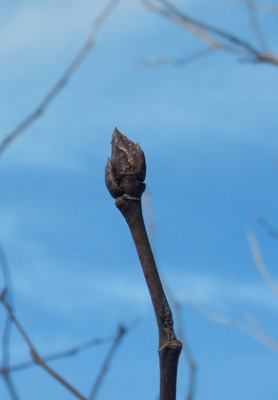
This week Wilderness Certification Program students went on a day trip along the Skykomish River to collect buds from cottonwood trees to make medicinal salves and balms. Here is an image of a bud before harvesting.
The best time of year to harvest these medicinal buds is in the late winter when the buds are filled with resin before they go into bloom. It's this resin that we're after and it's known throughout the herbal world as “Balm of Gilead” or “Nature's Neosporin”. It has antiseptic, anti-microbial and anti-inflammatory properties and can easily be made at home. Here, student Brooke displays the day's harvest.
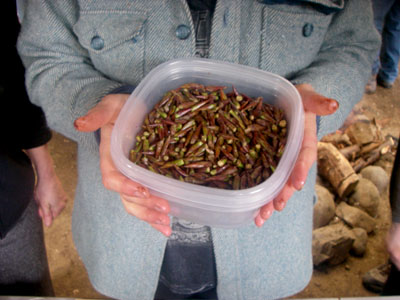
Once enough buds had been collected, they were packed tightly into a quart mason jar and filled with olive oil to infuse for 12 months. Last year's Alderleaf class infused their own cottonwood buds in oil and that’s the batch that this week’s class processed into medicine.
Here student Darrell is separating the buds from the oil by squeezing them out in cheese cloth.
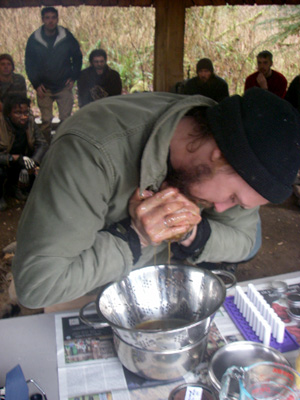
Students then heated up the oil and added beeswax to give it the consistency of a salve or lip balm (5 parts oil to 1 part beeswax). Here you can see the oil with the melted beeswax being poured into tins before it hardens into a salve.
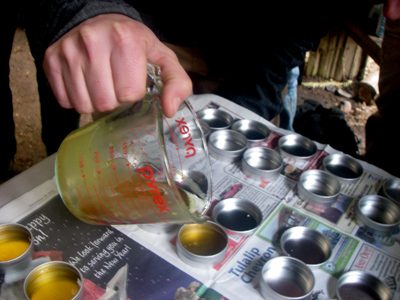
After letting the it cool for about 30 minutes, here is a look at our finished product.
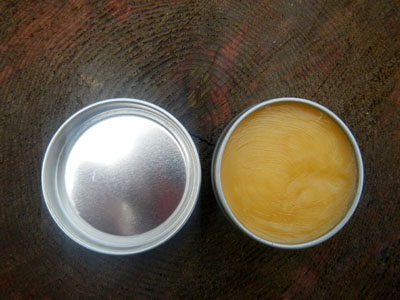
Unlike the store bought balms and salves, these are petroleum and additive free and won’t dry out your lips and skin.
Meanwhile, the other half of the students were busy making willow baskets and natural dyes. Much like the other half, they headed down to the Skykomish River to gather pencil thick willow branches. They did this in advance of the class because the branches needed to be dried and then soaked overnight to make them more flexible for basket making. Here student Sam is getting started on his basket.
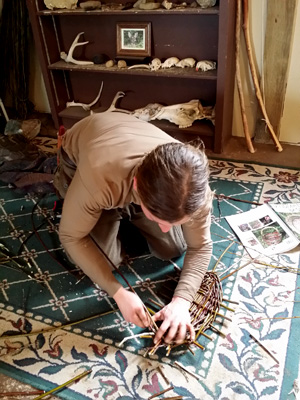
Another student, Samantha, is working on a smaller sized basket.
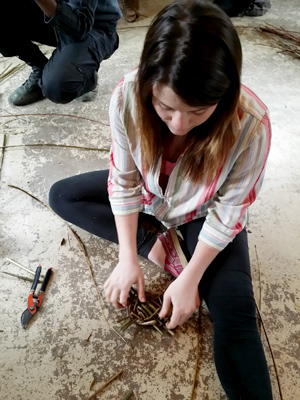
They also collected black walnut husks and western hemlock bark and ground them into small pieces using a pestle and mortar to make natural dyes.
Here students Brooke and Henk are practicing using the mortar and pestle to grind down the material.
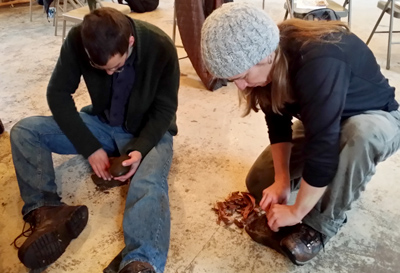
After grinding them down, they boiled the plant material in water for an hour and then died their materials. Here is a photo of some of their finished products (they also used red onion and purple cabbage to make their array of colors more diverse).
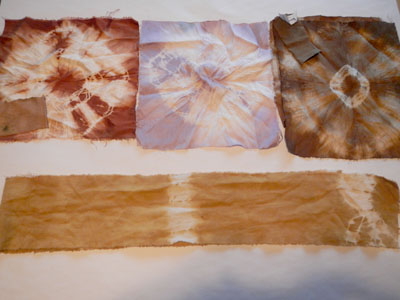
Overall,
it was another productive and exciting week at Alderleaf!
Next: Week 20: Survival Bow Making
Learn about the Alderleaf Wilderness Certification Program,
our in-depth, nine-month course that trains students in
wilderness survival, permaculture, wild edible & medicinal plants, wildlife tracking, naturalist, and
outdoor leadership skills.
Return back to AWCP Highlights
Is The Essential Wilderness Survival Skills Course Right for You? Take the "Online Survival Training Readiness" Quiz
See for yourself if this eye-opening course is a good fit for you. It takes just a few minutes! Get your Survival Training Readiness Score Now!

Grow Your Outdoor Skills! Get monthly updates on new wilderness skills, upcoming courses, and special opportunities. Join the free Alderleaf eNews and as a welcome gift you'll get a copy of our Mini Survival Guide.

 The Six Keys to Survival: Get a free copy of our survival mini-guide and monthly tips!
The Six Keys to Survival: Get a free copy of our survival mini-guide and monthly tips!
Learn more